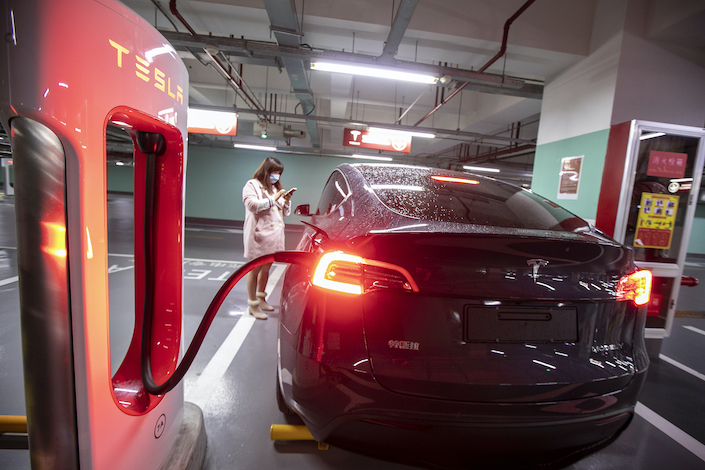Tesla China Apologizes to China’s State Grid After Charging Accident

Tesla Inc. apologized to State Grid Corp. of China after a viral video appeared to show a company employee blaming the power system for damage to a Chinese consumer’s Tesla Model 3, the top-selling electric car in China.
The owner of the car in Nanchang in southeast China’s Jiangxi Province told local press that his new Model 3 wouldn’t run after charging the battery at a supercharger station, saying that a series of errors appeared on the power display.
In a video secretly recorded and posted online by a reporter, a Tesla employee is shown telling the vehicle owner that a current overload in the national grid damaged the vehicle’s inverter. In an electric car, the inverter changes the battery’s DC electricity to AC to power the vehicle’s motor. The staff member denied that Tesla was responsible for the damage.
The video went viral online. Respondents on social media said the Tesla employee’s explanation avoided responsibility and sought to shift blame to China’s State Grid. In a statement on the Chinese social media platform Weibo, the State Grid’s Nanchang branch denied the allegations.
“Our power grid has been operating at a stable voltage, and no abnormality has been detected,” the company said. “The equipment surrounding the charging poles was also operating normally.”
It said Tesla vehicles connect with charging stations through the company’s own equipment and not directly to the power circuit.
In response, Tesla apologized to the State Grid in a Weibo video citing a misunderstanding in the exchange with the Tesla owner. The company said the recorded conversation between the staff member and the customer was edited. The overload explanation was only one possibility mentioned that might have caused the vehicle’s inverter to burn out, the company said in the video.
“We are deeply sorry for the misunderstanding and would like to apologize to the Nanchang Power Grid for the inconvenience caused,” Tesla said in the video. “Currently, we have already resolved the problem with the customer and are carrying out tests and investigations on the cause of this failure.”
Liu Kai, director of the Technology and Certification Department of the China Alliance for the Promotion of Electric Vehicle Charging Infrastructure, told Caixin that the likelihood of a charging station damaging an inverter is very small. The power grid provides electricity only according to the requirements of charging stations, Liu said, and Tesla has its own charging stations that have nothing to do with the power grid.
Tesla delivered 137,500 Tesla Model 3s in 2020, making it the top-selling electric car in China, according to the China Passenger Car Association. It started delivering its first Shanghai-assembled Model Y sport utility vehicles to customers in China last month, the latest milestone in the company’s drive to deepen its localization efforts in the world’s largest auto market.
Contact editors Denise Jia (huijuanjia@caixin.com) and editor Bob Simison (bobsimison@caixin.com).
Download our app to receive breaking news alerts and read the news on the go.

- MOST POPULAR






